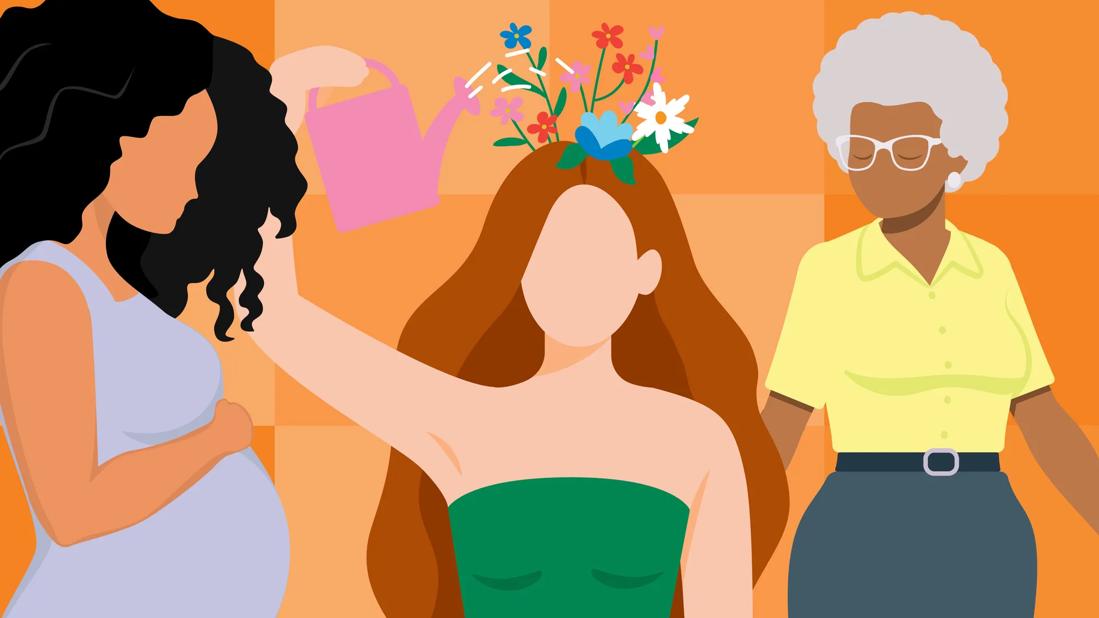Women’s health is more than gynecological care — it addresses chronic conditions and mental health concerns, too

When someone mentions “women’s health,” what comes to mind? Pap smears? Prenatal appointments? Mammograms?
Advertisement
Cleveland Clinic is a non-profit academic medical center. Advertising on our site helps support our mission. We do not endorse non-Cleveland Clinic products or services. Policy
You’re on the right track. Pregnancy care and caring for the biological structures of the female anatomy are part of it. But there’s more to women’s health than what’s under your shirt or in your pants. Much more.
Women’s health is about personalizing an approach to women’s well-being — from your gynecological needs and heart health to mental health and more. Because, while we don’t always stop to think about it, your sex has a direct impact on your overall health.
“When you consider the great span of medical science, most medical research has been historically centered around male bodies,” says Ob/Gyn Amanda Elbin, MD.
It wasn’t until 1993 that the National Institutes of Health (NIH) required that people of many backgrounds, including women, be included in NIH-funded clinical research. What we’ve learned since then has made it more and more apparent that men and women face different health challenges. So, they have different needs when it comes to managing their well-being.
“Women’s health providers and researchers work to ensure that we honor women’s needs and experiences to ensure optimal health throughout their lives,” Dr. Elbin advocates.
What are the ways that women’s health providers look to address those needs? Let’s take a closer look.
Advertisement
Women’s health specialists are experts in understanding the health risks that women face.
“Many common health concerns and chronic conditions affect men and women differently,” Dr. Elbin retiterates. “And their risk factors are different.”
For example:
What’s more, women aren’t as likely to be diagnosed as men.
A Danish study reviewed the health records of 6.9 million people and found that women were diagnosed with cancer two-and-a-half years later in life than men with the same diagnosis. And for metabolic diseases like diabetes, women received a diagnosis four-and-a-half years later.
All that to say, having a trusted women’s health provider who proactively considers your needs can make a difference in keeping you healthy.
For these reasons and more, women’s health specialists often serve as primary care providers (PCPs). They know and understand the ways your sex affects your day-to-day health, and they can help you find ways to manage it.
Women’s health addresses the whole woman, and that, of course, includes the organs and biology associated with the female anatomy. Women’s health providers care for the female reproductive system, from childhood and adolescence to your reproductive years and long after menopause.
So, they can:
Sexual health matters, too. And women’s healthcare providers are a trusted source of sexual health support.
Depending on your needs, they can:
Advertisement
Proper prenatal care is important for a healthy pregnancy and your well-being. From pre-pregnancy consultations through growth scans, labor, delivery and postpartum care, a women’s health specialist is your trusted partner. And if you could benefit from fertility services, they can help with that, too.
We’ve come a long way since the days of menopause being talked about only in hushed tones, if at all. Today, women’s health providers can provide a range of services to help women navigate menopause and its effects on their health.
They can help you manage symptoms of menopause, like hot flashes and vaginal dryness. And they can talk with you about options for treatments, like menopausal hormone therapy, to lessen the effects of menopause on your life.
Let’s be honest — women are often expected to put everyone else first. That pressure adds up and can take a real toll on your mental health. Women’s health providers get it. They can help you understand why self-care matters and can connect you with support that feels right for you.
“Women’s health providers are especially well-positioned to be empathetic and to validate your experiences,” Dr. Elbin says. “We understand the role that societal norms and cultural beliefs play in shaping a woman’s experience and the effects that can have on a woman’s health and happiness.”
Advertisement
If you have mental health concerns related to stress, depression, anxiety or just need a little bit of direction, a women’s health provider can help. And they can refer you to a welcoming and affirming behavioral health specialist who can support you, too.
Women’s health certainly includes the routine care of a body that comes with a uterus, vagina, breasts and all that. But it’s also about understanding you and your life.
Women face a different set of health challenges and needs than men. And a trusted women’s health practitioner can help you lead your healthiest life.
Advertisement
Learn more about our editorial process.
Advertisement

These steps can boost your well-being and protect your health (and energy!) for years to come.

This chronic condition most commonly causes pelvic pain and severe cramping during periods, but it can bring other types of pain symptoms, too

These over-the-counter kits are 99% effective at identifying when you’re most fertile each month

Start having sex about 72 hours before ovulation, then at least every other day during your fertile window

Strong vaginal and groin odor is normal for many people — it can be the result of sweat, urine infections and more

These substitutes for tampons and pads can be a great option for lower cost, lower carbon footprint and longer wear times

The Yuzpe regimen is less effective than other forms of emergency contraceptives, and it’s associated with more side effects

A women’s health specialist explains those cold flashes that come on quickly

The best parenting style balances enforcing rules and showing plenty of love

Tips include cutting back on sugar, focusing on exercise and managing stress

It can be harder to let go when you’ve invested time, energy and emotions — but it might be the healthier choice long term